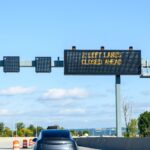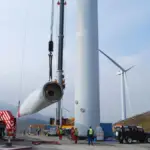Japan, a country renowned for its engineering marvels and innovation, showcases one of its most remarkable feats of infrastructure with the Tokyo Bay Aqua-Line. This ingenious project connects the cities of Kawasaki and Kisarazu, located on opposite sides of Tokyo Bay. Combining a viaduct, an underwater tunnel, and artificial islands, the Aqua-Line is not just a highway but a testament to Japan’s ability to conquer natural challenges with creativity and precision.

The Vision Behind the Aqua-Line
In the late 20th century, connecting Kawasaki and Kisarazu efficiently posed a significant challenge. The two cities, though separated by just 14 kilometers of bay, were hindered by the bay’s 70-meter depth and bustling maritime traffic. Traditional solutions like ferries or a surface bridge were either too time-consuming or impractical for Tokyo Bay’s economic and environmental constraints.
Thus, Japanese authorities embarked on an ambitious mission to build the Tokyo Bay Aqua-Line, combining cutting-edge engineering with an innovative design that would preserve the bay’s ecosystem and provide a seamless connection for commuters.
A Marvel of Engineering
The Tokyo Bay Aqua-Line integrates three main components:
- Viaduct
On the Kisarazu side, the highway begins as an elevated viaduct that stretches gracefully across the bay’s shallow waters. - Underwater Tunnel
The Aqua-Line then dives underwater into a tunnel stretching over 9.6 kilometers, one of the longest underwater tunnels in the world. Built to withstand natural disasters like earthquakes and typhoons, the tunnel represents Japan’s advanced engineering capabilities. - Artificial Islands
Two artificial islands were constructed in the bay as part of the project. These islands serve not only as structural supports for the highway but also as functional spaces:- Umihotaru Island: A massive island spanning 650 meters long, Umihotaru acts as a rest area and commercial hub. It offers a unique combination of parking, restaurants, shops, and panoramic views of Tokyo Bay, turning a practical highway into a tourist attraction.
- The second island supports ventilation systems crucial for maintaining air quality within the tunnel.
The Scale of the Project
Despite being inaugurated over 25 years ago, the Aqua-Line continues to impress with its scale and technical sophistication. The highway spans more than 14 kilometers, with a seamless transition from viaduct to tunnel. It handles the challenges of:
- Depth: The bay’s waters reach 70 meters, requiring robust tunnel construction.
- Environmental Concerns: The design ensures minimal impact on marine ecosystems while supporting heavy vehicular traffic.
- Aesthetic Appeal: Umihotaru’s shopping area and scenic views make it a destination in itself.
Challenges and Triumphs
Building the Aqua-Line was no small feat. Engineers had to tackle numerous obstacles, from the bay’s deep waters and seismic activity to the need for efficient ventilation in the underwater tunnel. Overcoming these challenges required cutting-edge techniques, such as:
- Using reinforced concrete and advanced tunneling machines to ensure durability.
- Creating artificial islands capable of withstanding the bay’s dynamic tides and weather conditions.
Despite its high construction cost, the Aqua-Line has become an indispensable part of Japan’s infrastructure, significantly reducing travel time and boosting regional connectivity.
A Gift to Travelers
The Tokyo Bay Aqua-Line isn’t just a highway; it’s a destination. Umihotaru Island, often called a “floating parking lot,” is a highlight of the journey. Visitors can stop to enjoy local delicacies, shop for souvenirs, or simply marvel at the views of Tokyo Bay and Mount Fuji on clear days.
For locals, the Aqua-Line offers a quicker and more efficient route between Kawasaki and Kisarazu, cutting down commute times and fostering economic integration. For tourists, it provides a unique glimpse into Japan’s dedication to blending functionality with beauty.
Like Us on Facebook!
Conclusion
The Tokyo Bay Aqua-Line is more than a road; it’s a celebration of human ingenuity. Combining engineering prowess with environmental sensitivity and aesthetic value, this underwater highway exemplifies how infrastructure can transcend its primary purpose to become a cultural and technological landmark.
Subscribe Us on YouTube!
Whether you’re commuting between cities or stopping to explore the wonders of Umihotaru, the Aqua-Line promises an unforgettable experience—a harmonious blend of innovation, utility, and beauty.




















